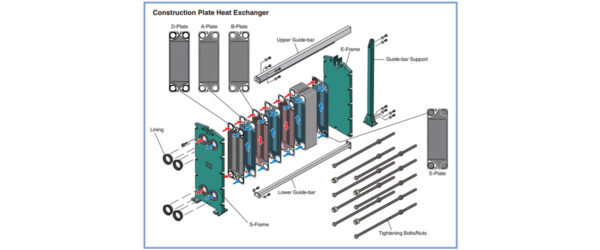Heat exchanger efficiency can be defined in many ways, in terms of thermal performance there are several key factors to consider;
Temperature differential – As discussed in point 3 (temperature cross-over) the difference between the hot fluid and coolant is very important when designing a heat exchanger. The coolant always needs to be at a lower temperature than the hot fluid. Lower coolant temperatures will take more heat out of the hot fluid than warmer coolant temperatures. If you had a glass of drinking water at room temperature for example, it is much more effective to cool it down using ice rather than just cool water, the same principle applies to heat exchangers.
Flow rate – Another important factor is the flows of the fluids in both the primary and the secondary side of the heat exchanger. A greater flow rate will increase the capability of the exchanger to transfer the heat, but a greater flow rate also means greater mass, which can make it more difficult for the energy to be removed as well as increasing velocity and pressure loss.
Installation – The heat exchanger should always be installed based on a manufacturers’ guidelines. Generally speaking the most efficient way to install a heat exchanger is with the fluids flowing in a counter-current arrangement (so if the coolant is travelling left to right, the hot fluid travels right to left) and for shell and tube heat exchangers the coolant should enter at the lowest inlet position (as shown in the diagrams above) to ensure that the heat exchanger is always full of water. For air cooled heat exchangers it is important to consider the air flow when installing a cooler, any part of the core which is blocked will compromise cooling capacity. To find out more about counter-flow and why it is more efficient


